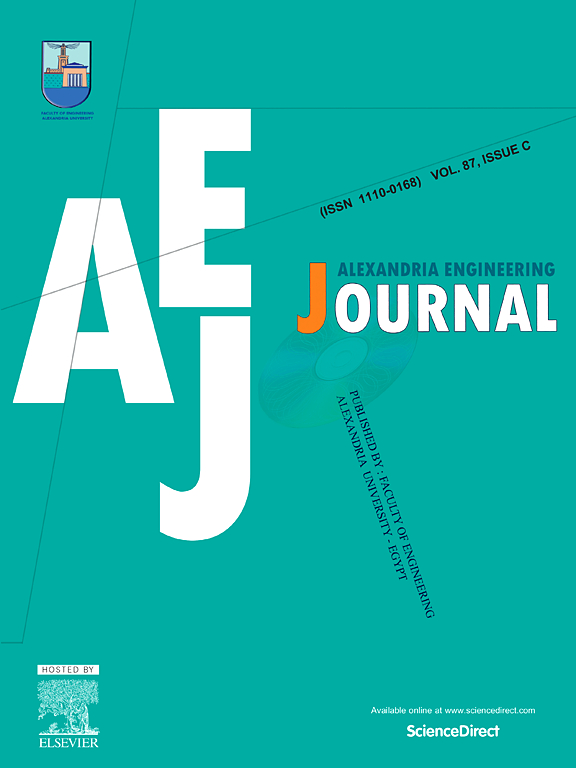用于检测复制移动视频伪造的高效卷积神经网络方法
IF 6.2
2区 工程技术
Q1 ENGINEERING, MULTIDISCIPLINARY
引用次数: 0
摘要
无人系统在军事监控、关键基础设施保护、执法、搜救行动和边境安全方面发挥着举足轻重的作用,显示出其在各种应用中的多方面重要性。视频欺诈检测是多媒体安全不可或缺的一部分,我们的任务包括精确识别视频序列中的修改片段。目前的视频欺诈检测方法通常依赖于人工特征选择和为检测特定篡改类型(如复制移动或拼接)而定制的模型。深度学习模型的一般表示能力和多种取证特征的联系仍未得到充分探索。本研究使用卷积神经网络(CNN)模型来识别复制移动视频伪造。复制移动伪造是视频篡改的一种类型,即在同一视频中复制一部分视频并粘贴到不同的地方,以掩盖视频的基本特征。所提出的方法包括将视频分割成单个帧,使用已经训练好的 CNN 模型提取每个帧的特征,然后利用这些特征训练一个新的 CNN 模型,将每个帧分类为合法帧或伪造帧。所提出的方法能有效检测复制移动视频伪造,准确率极高,在准确率和计算量上都超过了现有方法。在 SULFA、GRIP 和 VTD 数据集上,所提出的方法优于所有其他方法。该模型的准确率分别为 85.42%、86.16% 和 81.87%,所记录的最短时间分别为 9.6 秒、11.4 秒和 13.7 秒。因此,专家们可以将建议的方法用作实时检测虚假视频的机器学习工具。本文章由计算机程序翻译,如有差异,请以英文原文为准。
An efficient convolution neural network method for copy-move video forgery detection
Unmanned systems play a pivotal role in military surveillance, critical infrastructure protection, law enforcement, search and rescue operations, and border security, showcasing their multifaceted importance across diverse applications. Video fraud detection is integral to multimedia security, where our task involves the precise identification of modified segments within video sequences. Current approaches to video fraud detection often rely on manual feature selection and models tailored to detect specific tampering types, such as copy-move or splicing. The general representation powers of deep learning models and the connection of multiple forensic characteristics are still not fully explored. This research uses a convolutional neural network (CNN) model to identify copy-move video forgeries. Copy-move forgery is a type of video tampering whereby a portion of the video is copied and pasted somewhere different in the same video to cover an essential video characteristic. The method that is being proposed involves dividing the video into individual frames, extracting features from each frame by using a CNN model that has already been trained, and then utilizing these features to train a new CNN model that would classify each frame as either legitimate or fabricated. The proposed method effectively detects copy-move video forgery with an exceptionally high accuracy rate, exceeding current methods of accuracy and computational effort. The proposed method outperformed all other approaches on the SULFA, GRIP, and VTD datasets. The model's accuracy was 85.42 %, 86.16 %, and 81.87 %, respectively, with the shortest times recorded being 9.6 sec, 11.4 sec, and 13.7 sec, respectively. Consequently, specialists can employ the suggested method as a machine-learning instrument for detecting fake videos in real-time.
求助全文
通过发布文献求助,成功后即可免费获取论文全文。
去求助
来源期刊

alexandria engineering journal
Engineering-General Engineering
CiteScore
11.20
自引率
4.40%
发文量
1015
审稿时长
43 days
期刊介绍:
Alexandria Engineering Journal is an international journal devoted to publishing high quality papers in the field of engineering and applied science. Alexandria Engineering Journal is cited in the Engineering Information Services (EIS) and the Chemical Abstracts (CA). The papers published in Alexandria Engineering Journal are grouped into five sections, according to the following classification:
• Mechanical, Production, Marine and Textile Engineering
• Electrical Engineering, Computer Science and Nuclear Engineering
• Civil and Architecture Engineering
• Chemical Engineering and Applied Sciences
• Environmental Engineering
 求助内容:
求助内容: 应助结果提醒方式:
应助结果提醒方式:


